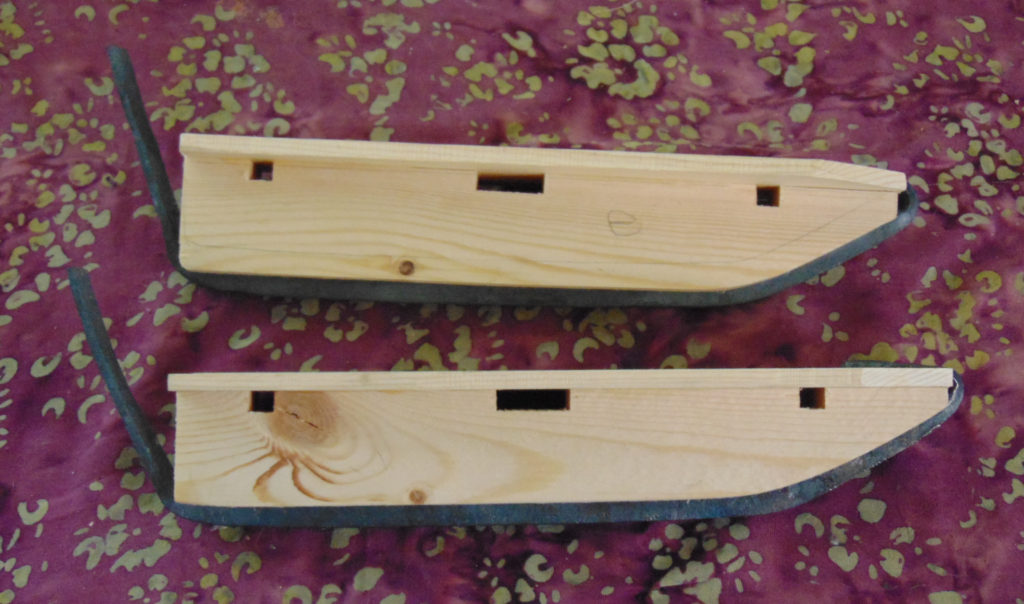This is a follow-up to my post on the Amsterdam skate, a skate dating to c. 1225 that was found in Amsterdam. In that post, I wrote about making the metal part. The skate also has a wood part, which this post is about.
Unfortunately, the wood part didn’t really survive its centuries in the ground, as you can see in this picture. I used the pictures of the Dordrecht skate to get a better idea of how it might have looked. And I tried to make it simple but structurally sound.
I ended up with a two-part design: a flat area for the foot and a block of wood to hold the blade. For wood, I used the leftover bits of a two-by-four. Pine lumber is not historically accurate (the skates were actually made from poplar and alder (Blauw 2001, p. 57)), but is easy to work with.
I used a band saw to cut out the footbed, which was inspired by my Buddy Snow Skate and the shape of my foot. The bottom piece, which held the blade, is a block from the remaining part of the two-by-four with a 3/8″-wide groove routed into the bottom for the blade to fit into and a bit of shaping done with hand tools. The holes for laces are just shallow cuts made with the table saw.

I glued the two pieces together with standard wood glue. To avoid water damage, I finished the skates with a modern lacquer.
Next, I have to grind the blade so it’s nice and shiny (and sharp!) and put the metal and wood parts together permanently. Then I can try them out on the ice.
Reference
Wiebe Blauw. 2001. Van Glis tot Klapschaats. Franeker: van Wijnen.

